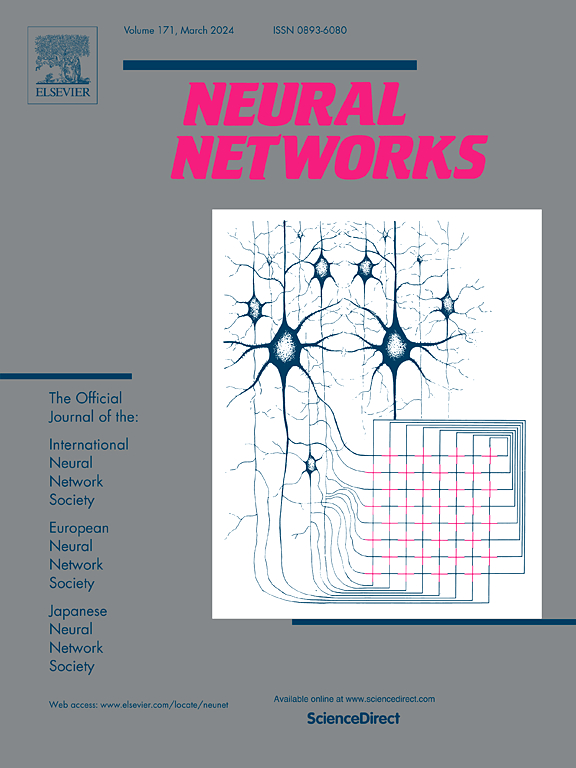Robust graph structure learning under heterophily
IF 6
1区 计算机科学
Q1 COMPUTER SCIENCE, ARTIFICIAL INTELLIGENCE
引用次数: 0
Abstract
A graph is a fundamental mathematical structure in characterizing relations between different objects and has been widely used on various learning tasks. Most methods implicitly assume a given graph to be accurate and complete. However, real data is inevitably noisy and sparse, which will lead to inferior results in downstream tasks, such as node classification and clustering. Despite the remarkable success of recent graph representation learning methods, they inherently presume that the graph is homophilic, and largely overlook heterophily, where most connected nodes are from different classes. In this regard, we propose a novel robust graph structure learning method to achieve a high-quality graph from heterophilic data for downstream tasks. We first apply a high-pass filter to make each node more distinctive from its neighbors by encoding structure information into the node features. Then, we learn a robust graph with an adaptive norm characterizing different levels of noise. Afterwards, we propose a novel regularizer to further refine the graph structure. Clustering and semi-supervised classification experiments on heterophilic graphs verify the effectiveness of our method. In particular, our simple method can have better performance than fancy deep learning methods in handling heterophilic graphs by delivering superior accuracy.
图是描述不同对象之间关系的基本数学结构,已被广泛应用于各种学习任务中。大多数方法都隐含地假定给定的图是准确和完整的。然而,真实数据不可避免地存在噪声和稀疏性,这将导致下游任务(如节点分类和聚类)的效果不佳。尽管最近的图表示学习方法取得了巨大成功,但它们本质上假定图是同亲的,而在很大程度上忽略了异亲的情况,即大多数连接节点来自不同类别。为此,我们提出了一种新颖稳健的图结构学习方法,以便从异类数据中获得高质量的图,用于下游任务。我们首先应用高通滤波器,通过将结构信息编码到节点特征中,使每个节点与其相邻节点更有区别。然后,我们通过自适应规范来学习具有不同噪声水平特征的鲁棒图。之后,我们提出了一种新颖的正则器来进一步完善图结构。对异质图的聚类和半监督分类实验验证了我们方法的有效性。特别是,在处理异嗜图时,我们的简单方法比花哨的深度学习方法有更好的表现,能提供更高的准确性。
本文章由计算机程序翻译,如有差异,请以英文原文为准。
求助全文
约1分钟内获得全文
求助全文
来源期刊

Neural Networks
工程技术-计算机:人工智能
CiteScore
13.90
自引率
7.70%
发文量
425
审稿时长
67 days
期刊介绍:
Neural Networks is a platform that aims to foster an international community of scholars and practitioners interested in neural networks, deep learning, and other approaches to artificial intelligence and machine learning. Our journal invites submissions covering various aspects of neural networks research, from computational neuroscience and cognitive modeling to mathematical analyses and engineering applications. By providing a forum for interdisciplinary discussions between biology and technology, we aim to encourage the development of biologically-inspired artificial intelligence.
 求助内容:
求助内容: 应助结果提醒方式:
应助结果提醒方式:


